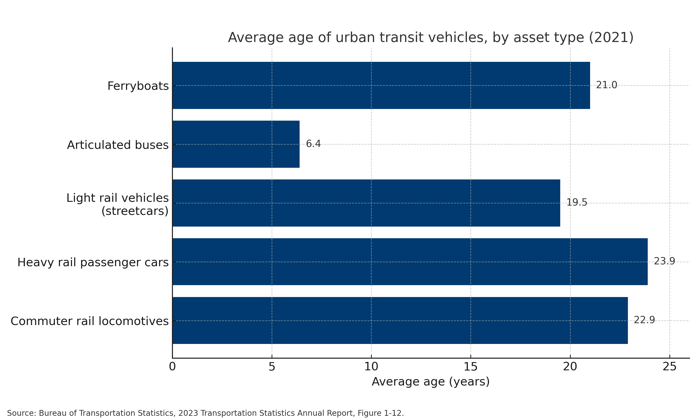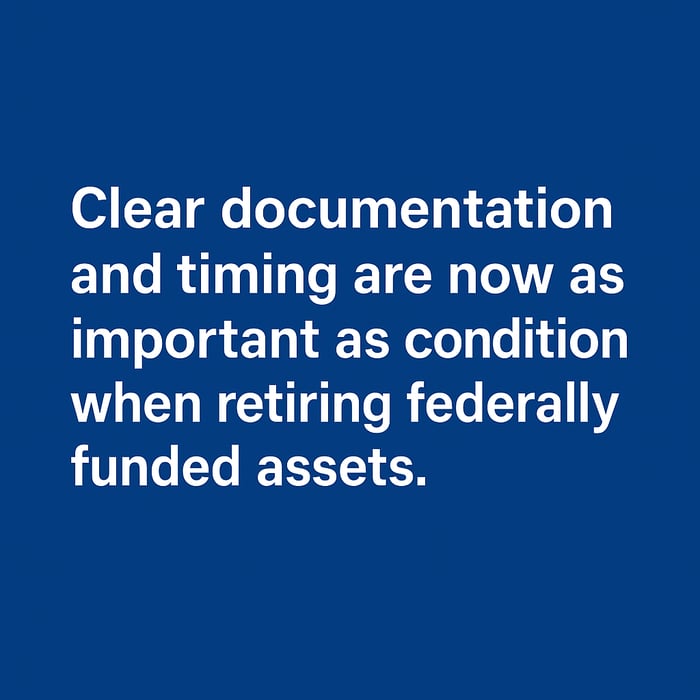Public agencies across the country are beginning to adjust to a new federal rule that clarifies how transit surplus assets purchased with federal funding must be handled once they reach the end of their useful life. The update also marks an important shift in how transit surplus will be managed nationwide. The change sounds technical, but it has real implications for municipal fleet managers, public works leaders, and anyone who plans asset replacement cycles.
The rule, issued under the Infrastructure Investment and Jobs Act, reinforces expectations from the Federal Transit Administration but adds more specific instructions about tracking “minimum useful life,” documenting funding sources, and accounting for the federal share when selling or redistributing vehicles and equipment. You can read the official guidance through the Federal Transit Administration.
Although the policy targets transit fleets, the reasoning behind it affects other publicly owned equipment as well. Agencies that dispose of road vehicles, utility equipment, heavy machinery, or other capital assets will likely feel pressure to adopt similar lifecycle discipline even when their equipment is not formally covered by federal rules.
What changed?
The biggest shift is clarity. The Infrastructure Investment and Jobs Act required the Federal Transit Administration to remove ambiguity around how federally funded rolling stock should be tracked and retired. The updated rule now spells out that:
- Agencies must document when each vehicle or piece of equipment reaches its federally defined minimum useful life. These figures come from Federal Transit Administration tables.
- Once an asset reaches that point, the agency has to follow a compliant disposal process. That can include resale, transfer to another agency, or other forms of reuse. The process must be documented so auditors can verify that federal rules were followed.
- If an asset is sold, the federal share of the proceeds is often owed back to the federal program unless the sale meets specific exemption criteria. The new guidance makes that accounting more explicit and places responsibility on the seller to show compliance.
This level of clarity means agencies will need to be more deliberate about how they plan replacements. Instead of parking old equipment indefinitely or disposing of assets informally, they will be expected to show a clean chain of records from purchase to final sale.

Why this matters for public agencies
This is more than an administrative adjustment. It affects fleet plans, resale timing, and the quality of information that must accompany each listing.
First, agencies need to know exactly which items were purchased partially or fully with federal funding. For many older fleets, this information may be buried in archived documents or legacy accounting systems. Confirming these details early prevents compliance issues later.
Second, the rule brings new attention to asset condition at the time of sale. Because the value of a federal share depends on resale price, agencies may have an incentive to retire equipment earlier in its decline cycle.
Data from the Bureau of Transportation Statistics shows that the average age of service vehicles nationwide has increased in recent years, which raises maintenance costs and downtime. You can view national age and service metrics through the Bureau of Transportation Statistics.
Selling closer to the end of useful life but before major failures can help agencies recover more value while simplifying the accounting process.
Third, the rule reinforces the importance of clean, complete listings. Buyers want mileage, hours, service logs, and transparent statements about how the asset was funded. Agencies will need this information not only for bidders but also for compliance checks.
Thinking about your own fleet replacement cycle? Public agencies across the country use Municibid to simplify the entire process of selling surplus vehicles and equipment. Listing is fast, transparent, and designed to reach motivated buyers who understand public-sector assets. Learn how agencies nationwide maximize value on surplus at Municibid.
A practical example
Imagine a transit district with a fleet of cutaway buses purchased about ten years ago, so the minimum useful life benchmark is approaching. Instead of leaving the older units parked while waiting for replacement vehicles to arrive, the district prepares its documentation early.
Staff gather their original purchase grant information, funding sources, mileage, service logs, and vehicle specifications. Removal requirements and buyer expectations are drafted in advance.
Once the replacement vehicles are delivered, the older units can be listed immediately. The result is a faster sale, improved cash flow, cleaner compliance documentation, and more efficient use of fleet space.

Takeaways for sellers
- Audit your fleet and identify which vehicles or equipment were purchased with federal funding.
- Collect documentation early. Mileage, service logs, condition summaries, and funding sources all matter.
- Review Federal Transit Administration useful life tables to determine when disposal procedures must begin.
- Prepare clear listings that state how the asset was funded and what buyers should expect.
- Time your auction strategically. Assets that remain reliable usually sell at higher value and create fewer compliance complications.
If you're planning upcoming disposals or want to improve how your agency handles surplus, Municibid provides a trusted platform that helps agencies sell assets efficiently and at real market value.




